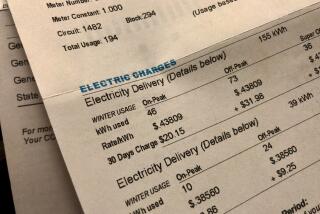Aid in Choosing a Phone Firm
- Share via
Southland telephone customers are finding “equal-access long distance” an often-heard refrain this year. But hearing it is one thing, dealing with it is another.
Equal access, which was introduced in Alhambra last month and is spreading market by market throughout Southern California, is an element of the court-ordered breakup American Telephone & Telegraph Co. It requires the former local Bell telephone companies to offer all competing long-distance telephone companies the same quality of connections and ease of access to their local networks that AT&T; has always enjoyed.
The California Public Utilities Commission has authorized about 60 long-distance services to compete in the state, although customers typically choose their “primary” service--which they get access to by dialing 1 before the phone number--from among only a handful of them.
Even with relatively few carriers to choose from, the problem for consumers is how to pick the best primary long-distance service.
Some help is now available from the California Public Interest Research Group, CalPIRG, whose 12-page booklet, “Equal Access for All, a Citizens Guide,” contains a brief background discussion of the AT&T; breakup and its ramifications. The booklet also offers tables comparing rates of eight long-distance companies for calls between Los Angeles and Phoenix, Denver, Houston, Chicago, Atlanta and New York, and between Los Angeles and San Diego, Fresno and San Francisco. Other tables set out additional charges, billing differences and other features.
Companies covered are Allnet, AT&T; Communications, Com Systems, GTE Sprint, ITT, MCI, SBS Skyline and U.S. Telephone.
The weekday or prime time rates offered by these firms range from 57 cents for the first minute and 34 cents for each additional minute or fraction of a minute for AT&T;, to 27 cents for each minute and fraction of a minute for SBS Skyline, according to CalPIRG’s survey.
Between Los Angeles and New York, rates ranged from 69 cents for the first minute and 46 cents for each additional minute or fraction for AT&T;, to 40 cents for each minute for Com Systems, which also bills, after the first minute, in six-second increments rather than the more usual 60 seconds.
But, the authors warn, “there is no overall ‘best’ service” since calling patterns and habits differ. They add that their survey does not compare the relative quality of service, and recommend another study, “The Complete Guide to Lower Phone Costs,” which found quality and reliability to vary widely.
CalPIRG’s booklet is available for $2 from CalPIRG at 1660 Corinth Ave., West Los Angeles, Calif. 90025, or 2187 Ulric St., Suite B, San Diego, Calif. 92111.
“The Complete Guide” is available for $6.95 from the Center for the Study of Services, 222 Agriculture Building, 101 The Embarcadero, San Francisco, Calif. 94105.
More to Read
Inside the business of entertainment
The Wide Shot brings you news, analysis and insights on everything from streaming wars to production — and what it all means for the future.
You may occasionally receive promotional content from the Los Angeles Times.










